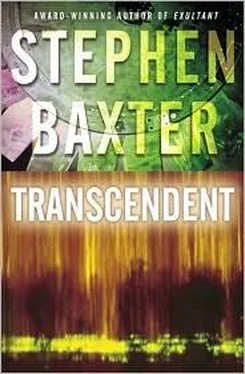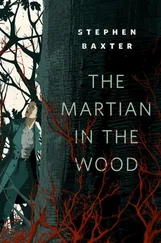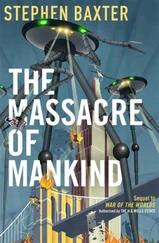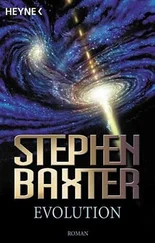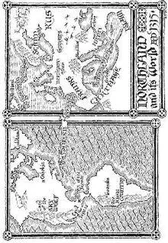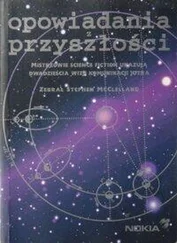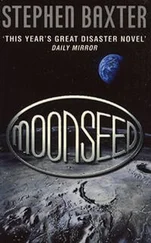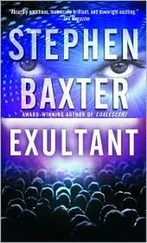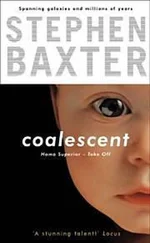Morag wasn’t freaked. “Give it time,” she said. “It’s not as if either of us is supposed to know how to handle this. I mean, how many support groups are there for husbands whose dead wives have come back to life? We’ll find our way through…”
Just as I’d said to Tom. But soon I wasn’t sure I believed it myself.
When we talked we did fine, so long as we talked about the past, the years we had in common. She was interested in my work, because she was interested in me.
But if we talked about the wider world she quickly grew confused, and even, I feared, bored. She had been out of the loop for seventeen years, after all. She had no memories of 2033, for instance; she was like a coma victim who had slept through the whole thing, and the transformation of global society wrought by the Stewardship and the Happy Anniversary strike was something she was learning about, not something she had lived through, as I had.
I was ripped up by guilt to feel this way, as if I somehow wasn’t deserving of the strange miracle of her return. But being with Morag was — a dislocation. I really was relieved to get away from her, to get back to work, to normality.
She continued to be subjected to examinations by federal-agency scientists and doctors. I think they might have left her alone if not for that strange anomaly of her weight.
Rosa, too, or anyhow her VR presence, was a frequent companion for Morag, and so was Gea, manifested in the form of her little rolling robot. Charmingly, Morag remembered the toy that had gathered dust on uncle George’s shelf for decades. They would sit with her, hour after hour, the bent-over little old woman in black and the absurd robot, gently interrogating her. I was happy about this; I suspected they had a better chance of figuring out some aspect of the truth behind Morag’s reincarnation than any number of government doctors.
I was also keen for Tom to spend some time with his mother. He was very reluctant at first. He surely didn’t want to get hurt again. Or maybe some deeper instinct was operating, some aspect of Tom’s humanity blocking her out, because this couldn’t be her. But he accepted he had to deal with the situation. And so they spent time together, away from me, away from Sonia. I knew it wasn’t making him happy, though.
After a couple of weeks we got a call from John in Anchorage. He was to be released at last, and the FBI had reconstructed the story of the bombing. So Tom and I flew down to Anchorage to collect him, and to learn the truth.
Tom, John, and I sat in a small room in the Anchorage FBI field office.
John looked healthy enough. He was clean-shaven; he had even managed to get his hair cut. But you could tell he had been living in the same set of clothes for a couple of weeks, even though they had been laundered and repaired; there were faint traces of bloodstains on one jacket sleeve.
And there was a hunted look in his eyes, almost indefinable, but there. After all he had spent fifteen days in custody at the whim of a vast system, without charges, without information on the process he was being put through. “Did me good to see the other side of the bars for once,” he told me when we met up. But I could see that was just a front, that he was never going to sleep so easily again. My stab of unholy glee when I first heard he was going to be detained now made me ashamed.
But I knew that Morag had spent some time with John, as a VR projection from our base at Prudhoe Bay. When I turned up in Anchorage I had no idea how those sessions had gone. All John had said was how awkward she seemed with the VR technology, which had moved on hugely since she had disappeared from the world. I had yet to work through my issues over this; we didn’t discuss it.
We studied VR images of our bomber. His name was Ben Cushman. He had been twenty-three years old. I hadn’t known him personally, but his personnel file described him as one of EI’s best and brightest young talents. Not only that, I was shocked to learn, he was married. He even had a kid, a three-year-old girl, a cute little button. His young wife, a college sweetheart in her pretty newlyweds’ house in Scranton, was now a widow, and that little girl would probably not even remember her father.
Tom said, “My God, he was younger than me. And he seems so normal. I thought he’d be some kind of zealot, or so stupid he was easily manipulated, or else he’d just be crazy. But he was none of those things, was he?”
No, he wasn’t. Cushman was intelligent, from a reasonably secure background, successful in his own career. There were none of the usual risk factors of suicide in his background: no mood disorders or schizophrenia, no substance abuse, no history of previous attempts on his own life.
“And he had a kid,” I said. “Who kills himself if he has a three-year-old daughter? That’s what I can’t figure out.”
John said grimly, “But you don’t need to be crazy, or ignorant, or desperately poor, or blinded by ideology, or in any way disturbed to become a suicide bomber. They are just like you and me — like Ben Cushman, here. The feds understand; they’ve had to figure it out. And in the last couple of weeks I’ve learned more about it than I ever wanted to know…”
There had been suicide bombers throughout history, he said, all the way back to Jewish Zealots who had attacked the imperial Romans back in the first century, and the Islamic Assassins in the Middle East in the eleventh century, even the Japanese kamikaze pilots of the Second World War. The modern wave of suicide attacks had begun with a truck-bomb attack on the U.S. embassy in Beirut in the 1980s. Since then the psy-chologists and anthropologists and others had had sixty years of experience in figuring out the patterns behind such attacks, and the individuals behind them.
“Except it’s not usually the individuals that count,” John said. “It’s the organization.”
Tom leaned forward. “What organization?”
Cushman, it turned out, had been a member of a radical anticonservation group who called themselves the Multipliers. John showed us a VR clip of Cushman himself, speaking brightly, standing at attention, a smile on his face. “Be fertile and multiply. Fill the Earth, and instill fear and terror into all the animals of the Earth and birds of the sky…”
“This is from his ‘suicide note,’ ” John said.
“Biblical,” Tom said.
“Yes. God’s mandate to Noah.”
The Multipliers were an extremist group who embraced the changes the world was going through. Let the climate collapse, they said, let the Die-back finish off the animals and plants and birds and fishes. After all there was no likely scenario in which people would go extinct. We should follow Noah’s mandate to be fertile and multiply — even if the end result was that we would finish heaped up in vast domed arcologies on an otherwise uninhabitable planet. And so they opposed organizations like EI with their vast ambitions to change the course of events, to save things.
It was hard to understand how a kid like Ben Cushman had got involved with a bunch like the Multipliers. But when you looked a bit closer, Cushman’s background was a bit more complicated than it appeared. His father, and the Cushmans for a few generations back, had worked in the steel industry that had imploded when America gave up on the automobile. A deep sense of failure, of abandonment and betrayal, had lodged itself in Ben’s head at a very young age.
He was a bright kid, of course. He had gone away to college; in fact he had won a scholarship from EI. With one part of his head he was attracted to the scale and ambition of EI programs. But there was a contradiction, for EI was a product of the world that had grown up after the collapse of the industries that had provided income and self-respect for Cushman’s family. There must have been a level on which he felt deeply uncomfortable with what he was doing.
Читать дальше
